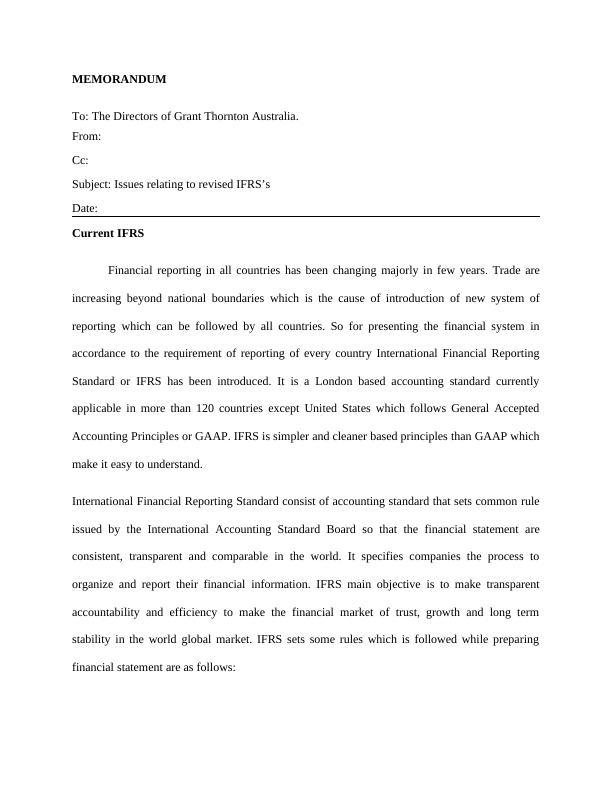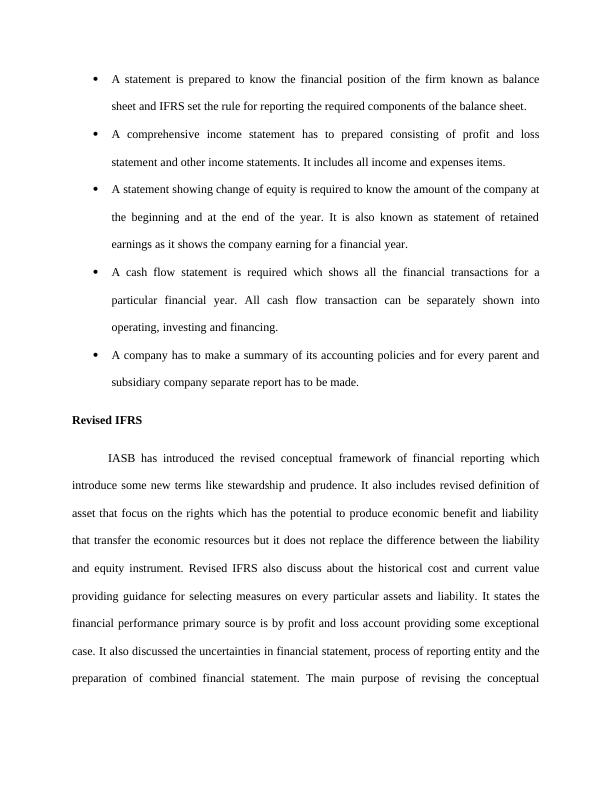Revised IFRS: Issues and Advantages
Commenting on the AASB Exposure Draft and providing feedback on the definition and recognition criteria of liability in financial reporting.
6 Pages1152 Words76 Views
Added on 2022-10-12
About This Document
The revised IFRS has brought some relevant changes but also consists of some issues. This document discusses the changes in the conceptual framework of financial reporting, the advantages of accepting the revised IFRS, and the issues that need to be addressed. It also provides references and bibliography for further reading.
Revised IFRS: Issues and Advantages
Commenting on the AASB Exposure Draft and providing feedback on the definition and recognition criteria of liability in financial reporting.
Added on 2022-10-12
ShareRelated Documents
End of preview
Want to access all the pages? Upload your documents or become a member.
understanding Difference in Format According to the GAAP
|6
|1282
|319
Application of IFRS in Australia and UK
|18
|4199
|83
Report on Conceptual and Regulatory Framework of Financial Reporting
|18
|4548
|201
Comparison between Accounting Standards - IFRS UK & GAAP USA
|6
|1352
|263
Financial Reporting Solution Assignment - Doc
|17
|3769
|359
Conceptual Framework for Financial Reporting: Definition, Advantages and Limitations
|6
|1255
|327



